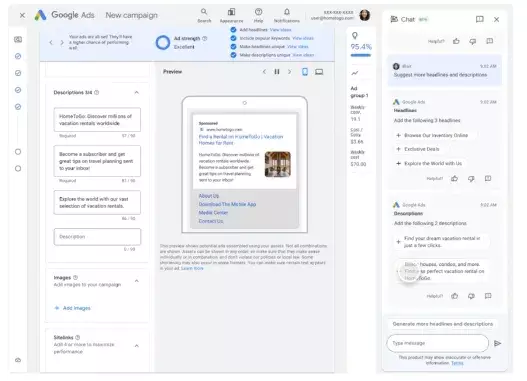The digital advertising landscape is undergoing a seismic shift, intensified by the invasion of artificial intelligence (AI) into various marketing strategies. At the recent DMEXCO conference, a key event in Europe focusing on digital marketing and technology, Google unveiled a suite of groundbreaking AI enhancements for Google Ads. This article will delve into the implications of these new features, scrutinize their potential effects on advertising practices, and consider the challenges ahead.
One of the most significant changes coming from Google is the expansion of AI ad creation tools to support multiple languages. Initially launched in English at the beginning of the year, the capability will soon be available in German, French, and Spanish. This expansion is not merely a matter of convenience; it reflects a growing recognition that language barriers can significantly hinder advertising efficacy in diverse markets. By allowing marketers to generate ad content in their native tongues, Google opens up opportunities for businesses to enhance engagement and relevance among various demographic groups. However, this raises questions about the true effectiveness of machine-generated content in capturing cultural nuances that are pivotal to successful marketing.
In addition to language support, Google has broadened its AI-driven image editing tools. Previously restricted to Performance Max ads, these robust features will soon grace Search, Demand Generation (Demand Gen), App, and Display campaigns as well. This democratization of image technology is a game changer. It enables businesses of all sizes to create visually appealing ads without the need for extensive design resources. By permitting users to upload up to five reference images and generate new promotional visuals, Google illustrates a significant leap toward personalized content generation. However, while this feature amplifies creative possibilities, it also raises concerns regarding over-reliance on AI. Will marketers risk losing their unique brand identities in the race for efficiency?
Google’s commitment to improving ad performance is evident in its enhancements in reporting capabilities and asset generation controls. The introduction of asset coverage reporting in Performance Max campaigns enables advertisers to drill down into performance metrics and identify underperforming asset groups. Moreover, the system’s recommendations—such as adding specific types of headlines or images—could vastly improve ad effectiveness by providing actionable insights based on data analytics.
However, while AI holds promise for optimizing ad campaigns, businesses must be cautious not to relinquish total control to automated systems. The effectiveness of AI is inherently tied to the quality of the data it processes. As erroneous or biased data could lead to subpar recommendations, the onus remains on advertisers to critically evaluate the insights generated by these systems to ensure alignment with their broader marketing strategy.
Despite the enthusiasm surrounding these advancements, it’s crucial to approach them with a critical lens. The innovation in AI advertisement tools offers tangible advantages, yet it also shows significant limitations. For instance, while image generation has improved, the reality remains that AI is still prone to producing awkward or irrelevant visual content. The impact on brand perception could range from humorous to damaging, depending on the quality of the generated material. Companies must tread carefully and stay engaged in the creative process, ensuring that AI-assisted marketing complements rather than dictates their campaigns.
Furthermore, the implementation of features like omnichannel bidding in Demand Gen campaigns presents both opportunities and obstacles. While the capability suggests a unifying approach to advertising across channels, marketers must navigate the complexities of integrating these channels effectively—requiring acumen in both technical and strategic dimensions.
Google’s announcements at DMEXCO signify an ambitious push to integrate advanced AI capabilities within Google Ads, promising to enhance the efficiency, personalization, and effectiveness of advertising efforts. As businesses explore these tools, they must balance the benefits of AI with the inherent risks and challenges present in automated systems. The evolution of advertising is undoubtedly exciting, but it demands that marketers remain vigilant and engaged in maintaining the essence of their brand throughout this AI-driven transformation. Only through a balanced approach can brands truly unlock the potential of these cutting-edge advancements and thrive in an increasingly complex digital landscape.


Leave a Reply